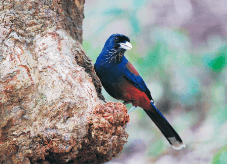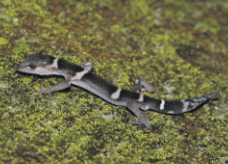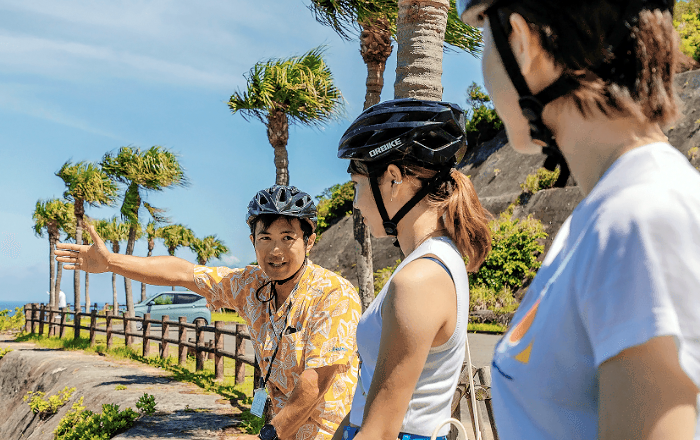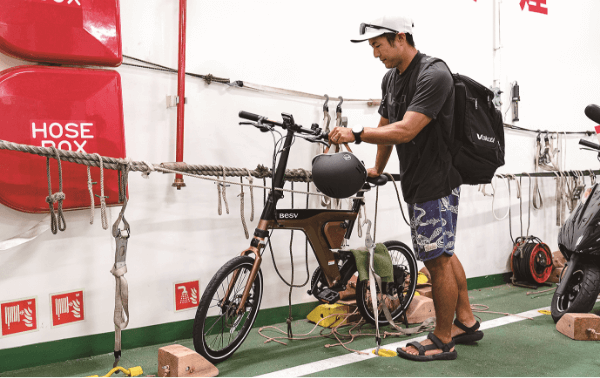




In July 2021, the islands of Amami Oshima, Tokunoshima, northern Okinawa, and Iriomotejima were registered as World Heritage sites. The deciding factors for registration were the biodiversity of the many rare plants and animals that have evolved uniquely to inhabit and grow on the islands. Approximately 90% of the amphibians and 60% of the land mammals and reptiles inhabiting Amami Oshima and Tokunoshima are endemic to these islands. The subtropical flora and fauna forest, Kinsakubaru, and Sumiyo's mangroves are home to subtropical plants such as the flying spider-monkey tree fern, considered a living fossil, and rare species such as the Amami jay (a protected species) and the Amami rabbit.
World Heritage sites are cultural and natural properties designated for protection and conservation to be handed down to posterity as the common heritage of humanity. There are three categories of World Heritage sites: cultural, natural, and mixed. Natural heritage includes landforms, geological features, and ecosystems of outstanding universal value, as well as populations and habitats of endangered flora and fauna.




Amami Oshima has inherited its unique nature and traditions from the past. There, people have lived their lives accepting things as they are.We spoke with two locals who are inheritors of nature and traditions about what they would like to leave behind for future generations.

Amanico offers activities in the Amami sea and mangroves with the hope of putting smiles on people's faces through Amami's nature. Since 2021, when the island was registered as a World Natural Heritage site, it has also adopted a new electric-assist mountain bike, known as an e-bike, to offer tours that bring visitors up close and personal with unspoiled nature.
Mr. Shirahata says, "In Amami, a car-oriented society, you need to rent a car to go sightseeing. I thought traffic congestion would increase with more tourists due to the registration of Amami as a World Heritage site. That's why we thought bicycles would be a good new way to get around the island."
Some tourists rode road bikes, but he thought e-bikes would allow those not physically fit to enjoy touring the island, climbing mountain passes, and so on.

The entire Amami Oshima is currently working to promote the use of e-bikes. Amanico, a pioneer in introducing e-bikes in the private sector, is consulting with the local government and working with the town office to create route maps. Mr. Shirahata explains the appeal of the increasingly popular e-bikes as follows.
"The e-bike allows you to enjoy your time on the island more than a car. You can enjoy the local customs and conversations with people as you pass by, and take your time to explore the island while getting to know the locals."
Locals will ask you, "Are you okay?" when you climb the hill. This is nothing special. In Amami, it is common practice to talk to people even if they are strangers. The locals know that the passes are steep, so they all pay their respects when people climb over them. E-bikes allow you to cross mountain passes easily that would be impossible to cross on an ordinary bicycle, even if you were pedaling standing up, without getting out of breath.
You can explore Amami Oshima's nature on an e-bike, which is full of charm. Mr. Shirahata, a native of the island, says that the nature of Amami is special to him as well. He says, "I always try to enter the sea and the mountains with due respect. Nature is very wonderful, but at the same time, it can be terrifying. Amami's nature always makes me feel humble.”
Although nothing, in particular, has changed following the registration as a World Natural Heritage site, he says he still feels a greater sense of pride. He says that the desire to preserve Amami's ecosystem, the richness of nature, and the world's recognition of its value gave the islanders confidence in themselves.
"When I was a kid, I sometimes felt a little unsure of myself just because I was on a remote island. But now I'm truly proud of this island, and I think it has led me to a positive way of life," Shirahata says.
Mr. Shirahata has begun a new initiative to promote interactions between islands by canoe. In the summer of 2022, he took a six-person canoe for nine hours to cross from Takarajima, 100 km away, to Amami Oshima. "In 2023, the 70th anniversary of the reversion of the Amami Islands to Japan, we want to extend the canoeing distance to Yakushima and Kagoshima on the mainland," says Mr. Shirahata.
Mr. Shirahata is also operating a new store in the city of Kagoshima, where he rents e-bikes within the city limits. After touring the sightseeing spots in Kagoshima by e-bike, you can board a ferry with the e-bike and explore Amami. Expectations are mounting for a new form of travel connecting the mainland and Amami by e-bike and ferry.


Several types of e-bikes are available, including folding, to suit all riders. We recommend the 2.5-hour route, which takes you to Ohama Seaside Park and then to the forest. Listen to the staff’s guidance and ride safely around Amami Oshima.







Ferries make it possible for you to travel with your bicycle! You can also enjoy the pleasure of traveling around the islands by boat. Besides bicycles, surfboards and other large items can also be transported.

To explore Kinsakubaru on Amami Oshima, you must be accompanied by a certified eco-tour guide in order to conserve the natural environment. The night tour, where visitors explore the forest in a vehicle driven by a guide, allows you to see nocturnal creatures such as the Amami rabbit.

Humpback whales come to the warm waters of Japan to give birth and raise their young. Whale watching is popular in the Amami Islands, especially around Tokunoshima, where you can spot and observe migrating whales from December to March from boats.

Canoeing through some of Japan's best mangroves

Learn the value of Amami Oshima's nature and the rules to protect it

Introduces the features and ecosystems of each island of the Amami Islands

Museum for experiencing the sea of Amami